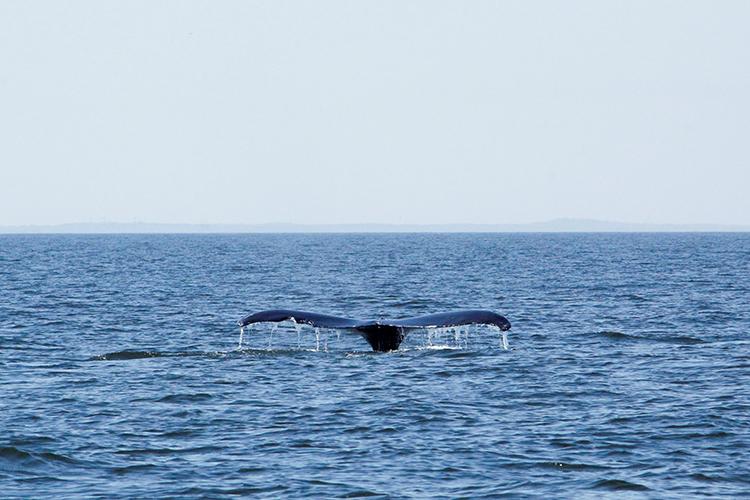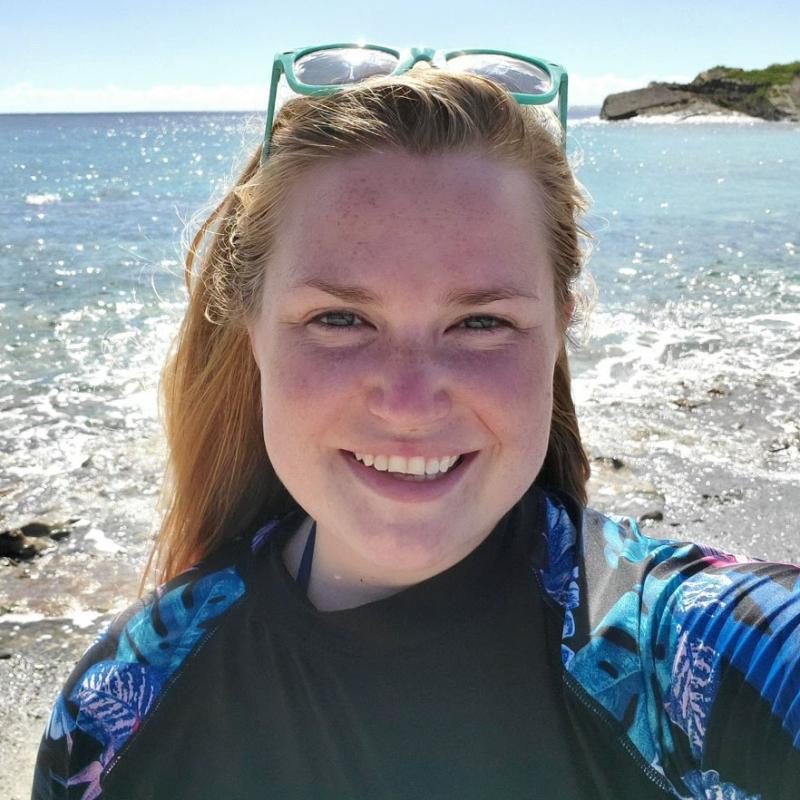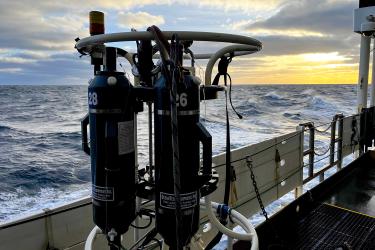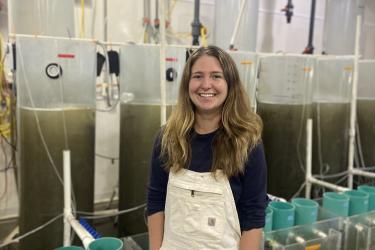After three trips on the F/V Tenacious II, I switched things up and sailed on the F/V Mary Elizabeth for the last trip of the spring survey. Both vessels had been catching mostly dogfish during the survey, so unsurprisingly we caught a lot of dogfish on the first day of the trip. The second day brought some welcomed changes, with a couple of baskets full of haddock. One haul had a number of small haddock. It’s a good sign to see the next year class coming through. The crew was all smiles seeing some groundfish on the hooks.
Another reason to smile—I finally got my whale pictures!!! While I was eating lunch in the wheelhouse, the captain called my name and said to look out the window. He was pointing at a calm patch of water the whales leave behind as they submerge. I immediately grabbed my camera and sprinted outside. One of the crew members hightailed it after me, phone in hand. And there it was—a humpback whale. We each grinned ear-to-ear as it surfaced a couple hundred yards away from the boat. We watched the whale blow and surface a few times, before arching its back to clearly display the hump it’s named for. Its tail came completely out of the water before slinking back into the sea to dive down deep. When I returned home, I submitted my sighting details and photos to the North Atlantic Humpback Whale Catalog and discovered that this individual whale is named Pixar.
The next day we sampled the last station of the spring season. It was very close to the previous day’s station. Because one haul had a bunch of haddock on it and the other mostly had hooks with no fish on them, nobody knew what to expect for this station. I was truly surprised by what came up—a haul full of wrymouths! During my 5-year career as a fisheries observer all over the Northwest Atlantic, I’ve only ever seen one or two wrymouths in a single haul in a handful of trips. This station had 28 of them! I love wrymouths because they come up looking so angry. They remind me of grumpy old men. They writhe around with their mouths open to seem intimidating, but they really can’t do much harm. This was definitely a trip highlight for me!
We were able to save fish for future outreach needs. Some were frozen for the upcoming Woods Hole Science Stroll on Saturday, August 12, in Woods Hole, Massachusetts. We’ll thaw these fish to teach visitors about the kinds of fish in our region, how we collect data and biological samples, and how our data are used. We also saved a few other fish for our Woods Hole Science Aquarium. Everyone on board was very excited to contribute to the aquarium collection. We saved an Atlantic cod, a small thorny skate, some red hake, a large Jonah crab, and a longhorn sculpin. They’ll go into quarantine to ensure that they are healthy and parasite-free before introducing them to the main tanks. We hope people will soon be able to see these fish. It’s really cool to see local species on display. So, if you stop in, keep an eye out for what we brought back!








